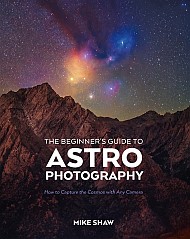Astronomy
Russia Loses Launch Capability After Accident at Baikonur Cosmodrome
A severe accident at the Baikonur Cosmodrome involving a wrecked maintenance cabin has indefinitely delayed Russia's ability to launch crewed missions and payloads to the International Space Station (ISS).
Why Are ADHD Rates On the Rise?
More than 1 in 10 children in the U.S. have ADHD, fueling debate over the condition and how to treat it
How Close Are Today’s AI Models to AGI—And to Self-Improving into Superintelligence?
Today’s leading AI models can already write and refine their own software. The question is whether that self-improvement can ever snowball into true superintelligence
Did Asteroids Invent Gum Billions of Years Ago?
What is “gum”? Most people have probably never considered this question, and might answer something like a chewy material you can put in your mouth. But, to a scientist they might answer something like “nitrogen-rich polymeric sheets”, because precisely defining the chemistry of a material is important to them. Or at least, that’s what they called a type of organic material found in the sample collected of the asteroid Bennu by the OSIRIS-REx spacecraft. But more informally, scientists have taken to calling it “space gum”, and the process it formed under is making some of them question current models of asteroid formation.
Dust In A Telescope's Eye Could Blind It To Earth 2.0
Hot exozodiacal dust can thwart our efforts to detect exoplanets. It causes what's called coronagraphic leakage, which confuses the light signals from distant stars. The Habitable Worlds Observatory will face this obstacle, and new research sheds light on the problem.
China Outlines Future Plans in New Video, Including Finding Earth 2.0
A video that appeared on CGTN's Hot Take details four missions that China will be sending to space in the coming years, including a survey telescope that will search for Earth 2.0.
Historic May 2024 Gannon Solar Storm Compressed Earth’s Plasmasphere
A powerful geomagnetic superstorm is a once a generation event, happening once every 20-25 years. Such an event transpired on the night of May 10/11, 2024, when an intense solar storm slammed into the Earth’s protective magnetic sheath. Now, a recent study shows just how intrusive that storm was, and how long it took for the Earth’s plasma layer to recover.
Why Leftover Pizza Is Actually Healthier: The Science of ‘Resistant Starch’ Explained
Researchers have discovered that cooling starchy foods—from pizza to rice—creates “resistant starch,” a carb that behaves like fiber and alters your blood sugar response
SPHERE Shows Us How Our Solar System Isn't Much Different Than Others
Observations with the SPHERE instrument on the European Southern Observatory's VLT revealed the presence of debris rings similar to structures in our Solar System. SPHERE found rings similar to the Kuiper Belt and the Main Asteroid Belt. Though individual asteroids and comets can't be imaged, these debris rings infer that other solar systems have architectures similar to ours.
Is a River Alive? A Conversation with Robert Macfarlane on Nature’s Sovereignty
Scientific American sits down with nature writer Robert Macfarlane to discuss his latest book—one of our top picks of 2025—and whether a river has rights
Was the ‘Star of Bethlehem’ Really a Comet?
A scientist has identified a possible astronomical explanation for the Star of Bethlehem, as described in the Bible
Plastic Pollution Will More than Double by 2040, Yielding a Garbage Truck's Worth of Waste Each Second
An estimated 280 million metric tons of plastic waste will enter the air, water, soil, and human bodies every year by 2040, data shows
Comet 3I/ATLAS from beyond solar system carries key molecule for life
Comet 3I/ATLAS from beyond solar system carries key molecule for life
Testing Drones for Mars in the Mojave Desert
What If the Moon Were Cheese? John Scalzi’s Latest Book Has the Answer
Scientific American talks to the author of When the Moon Hits Your Eye, one of our best fiction picks for 2025


